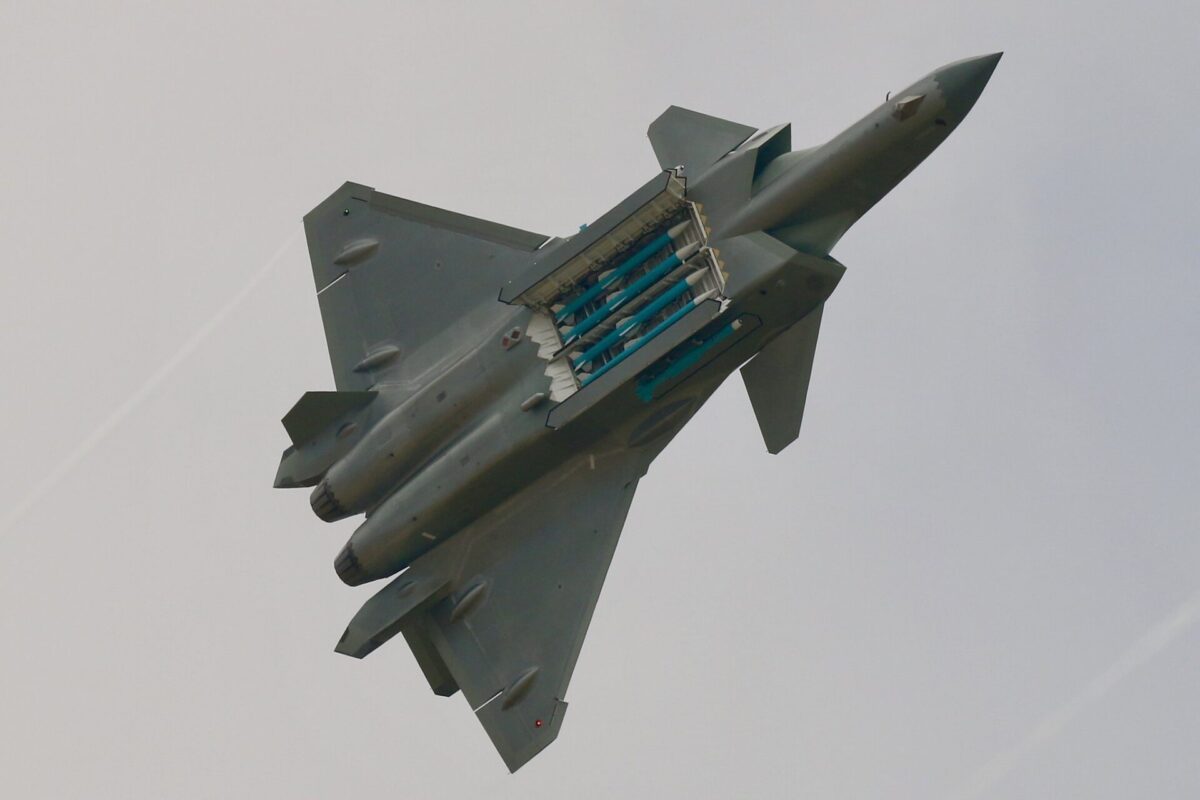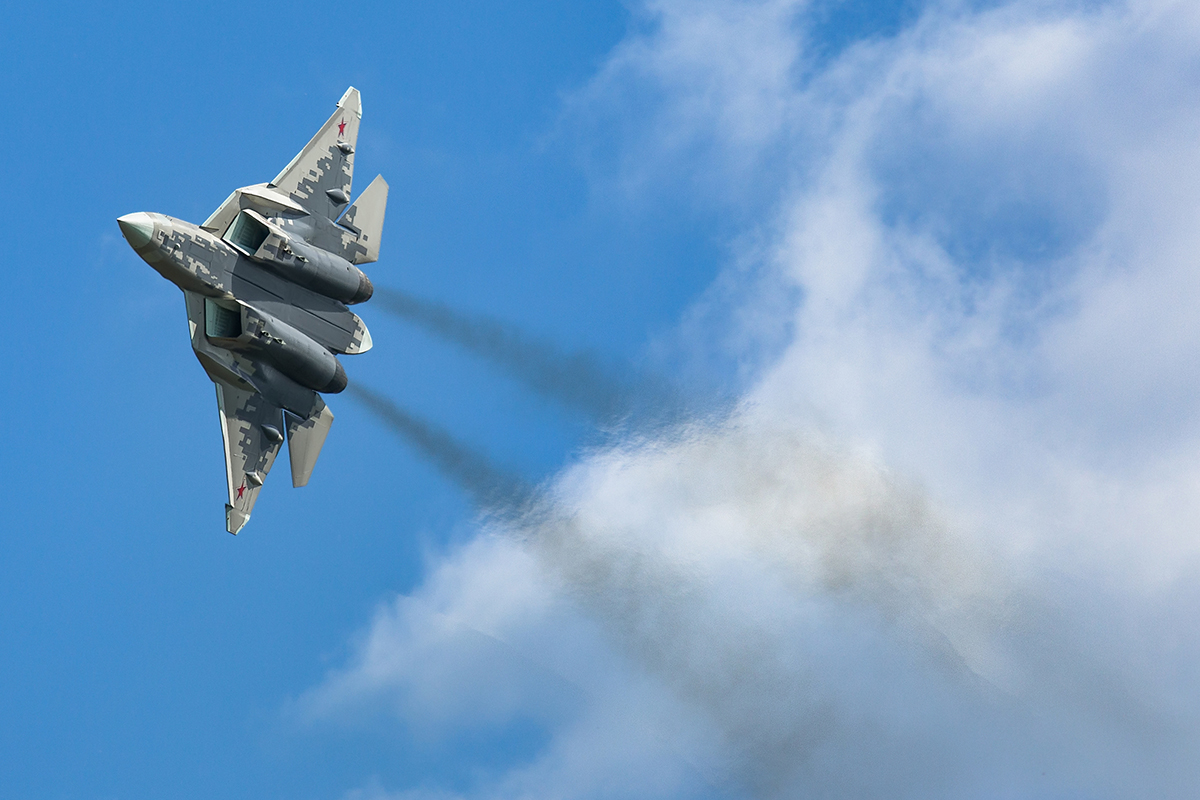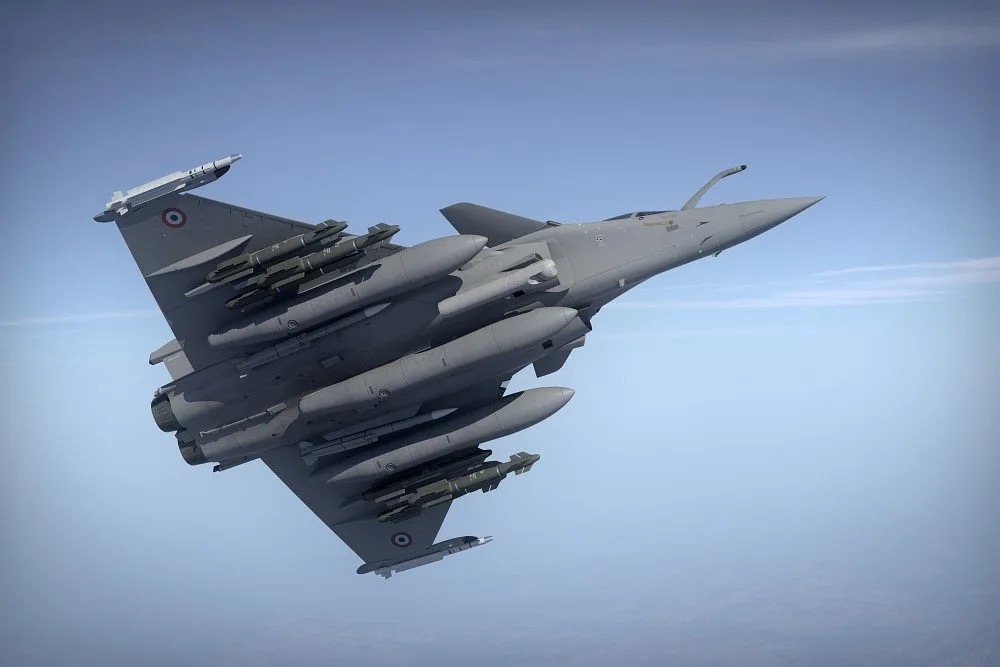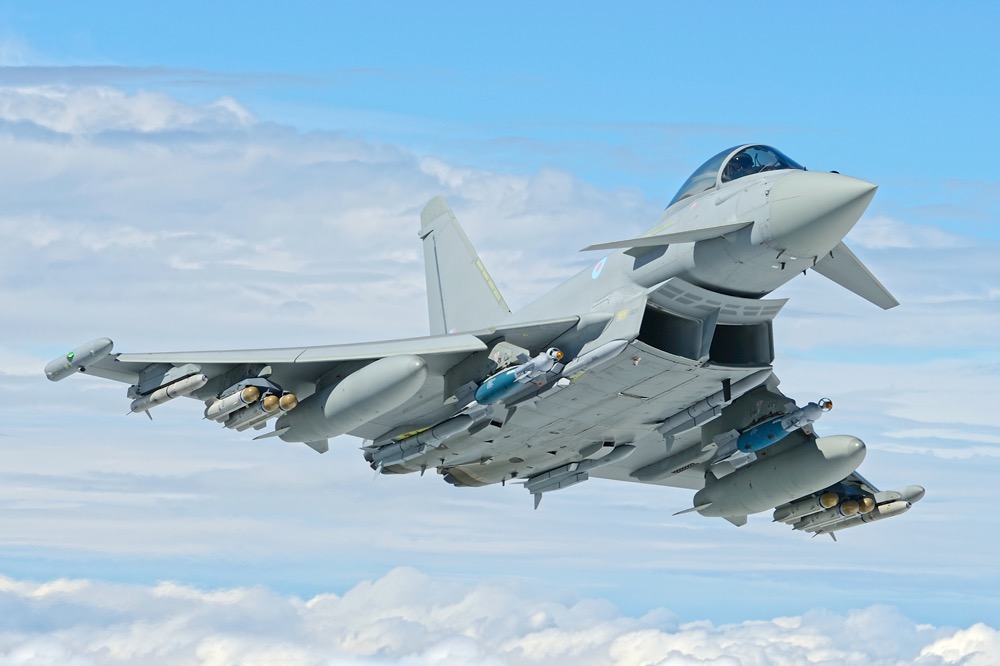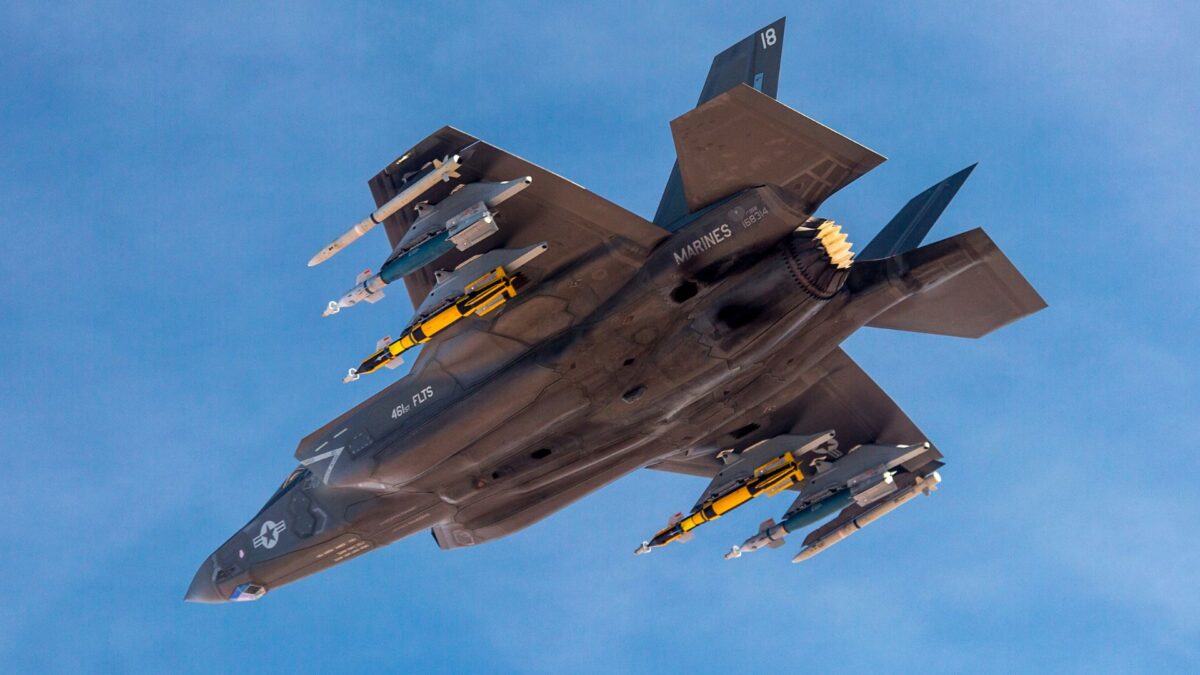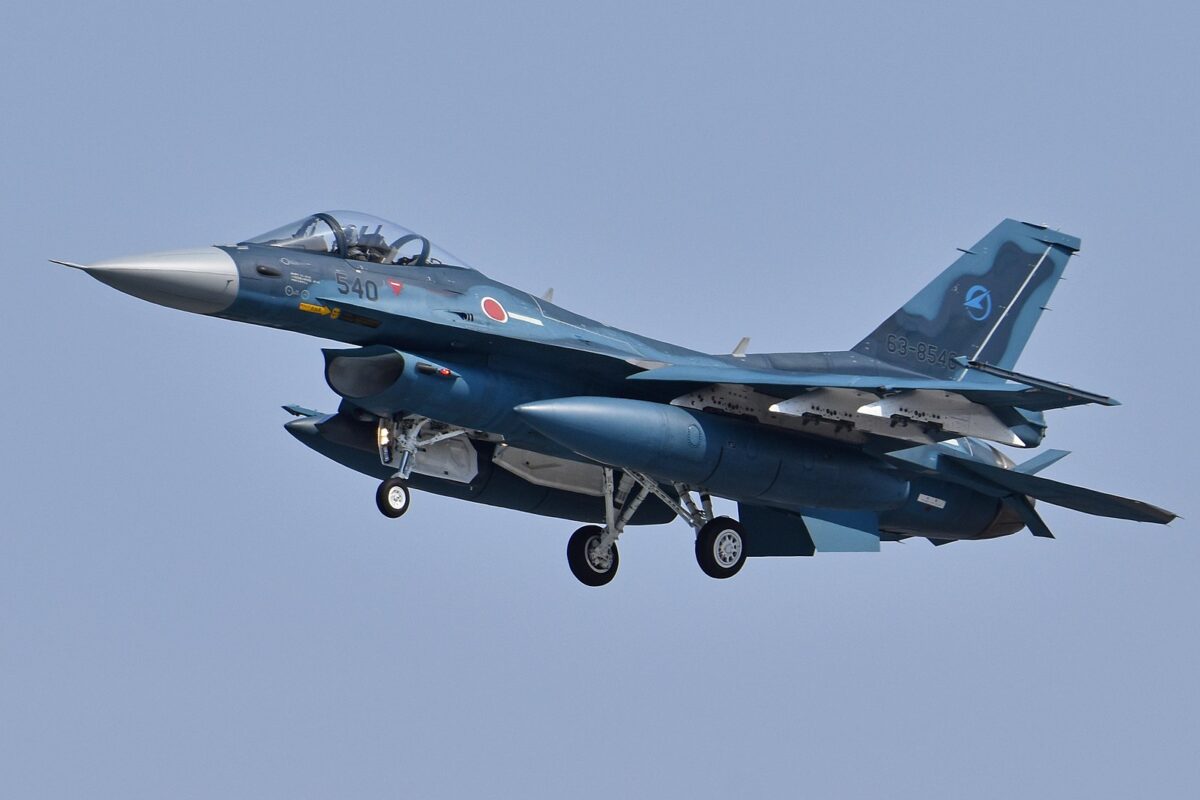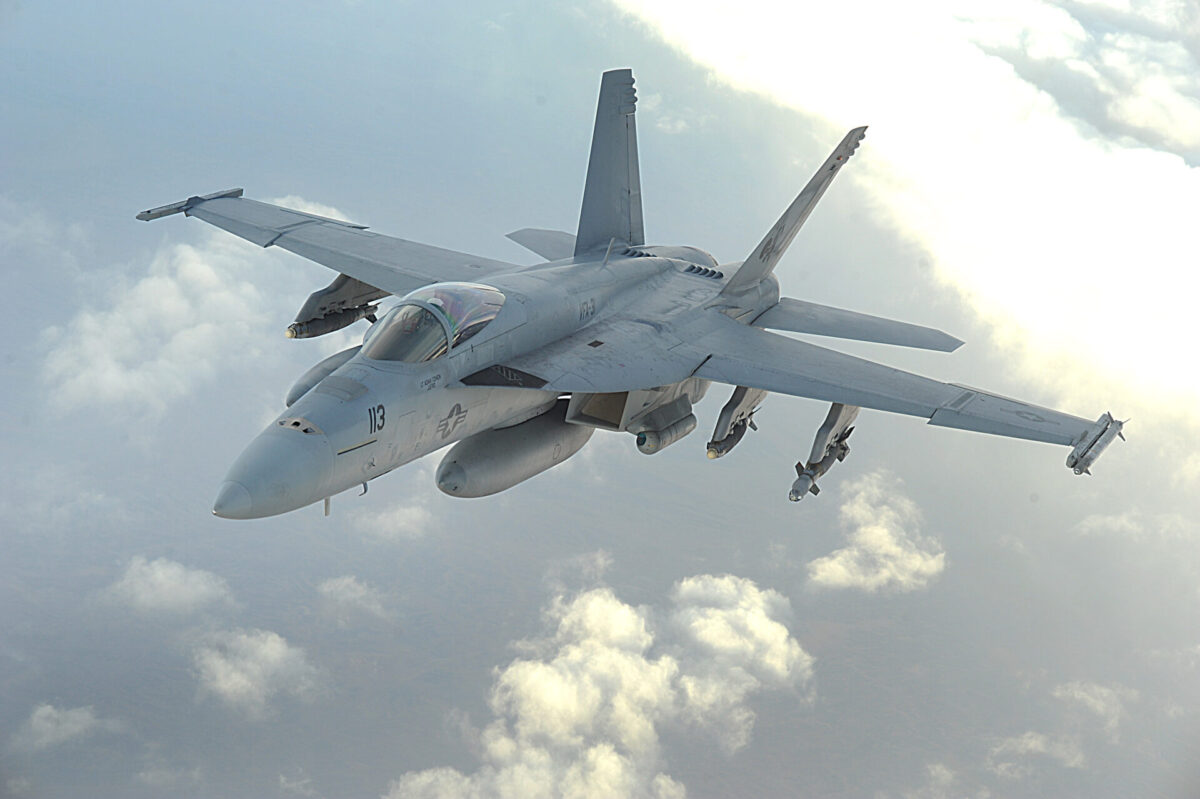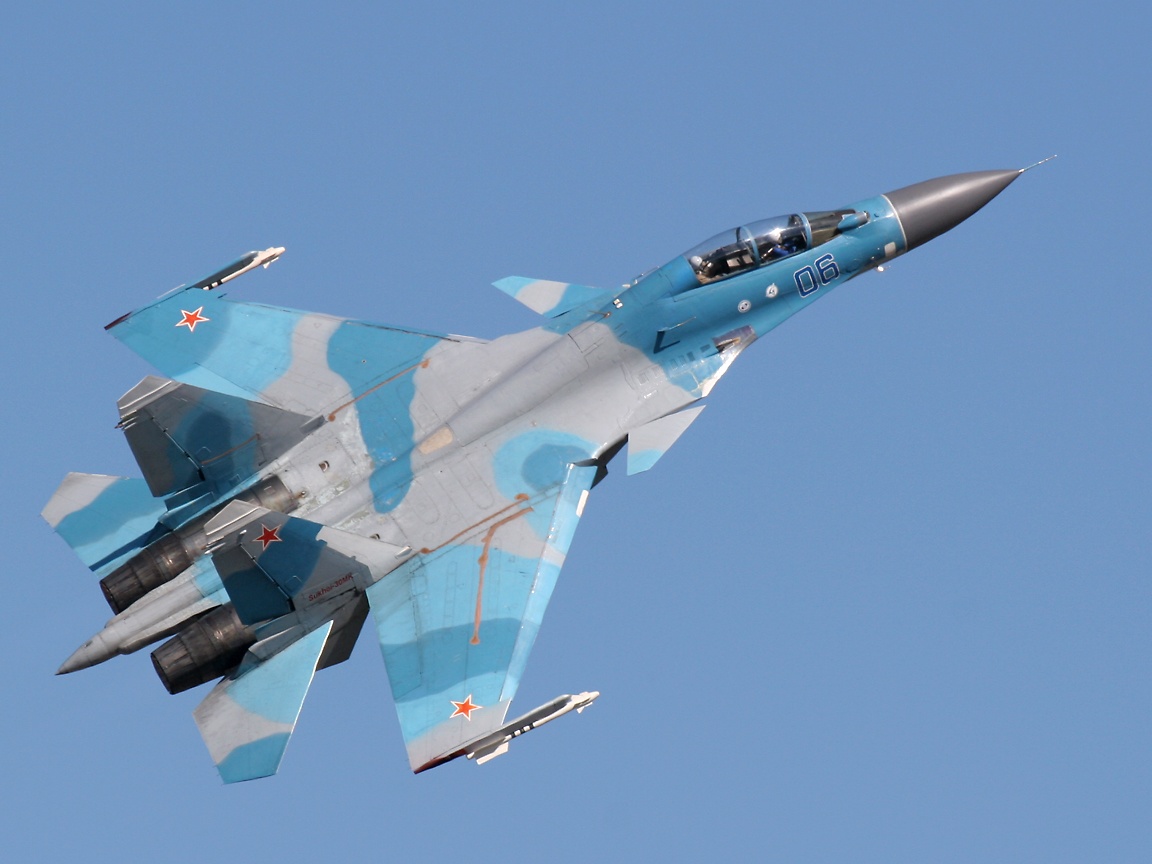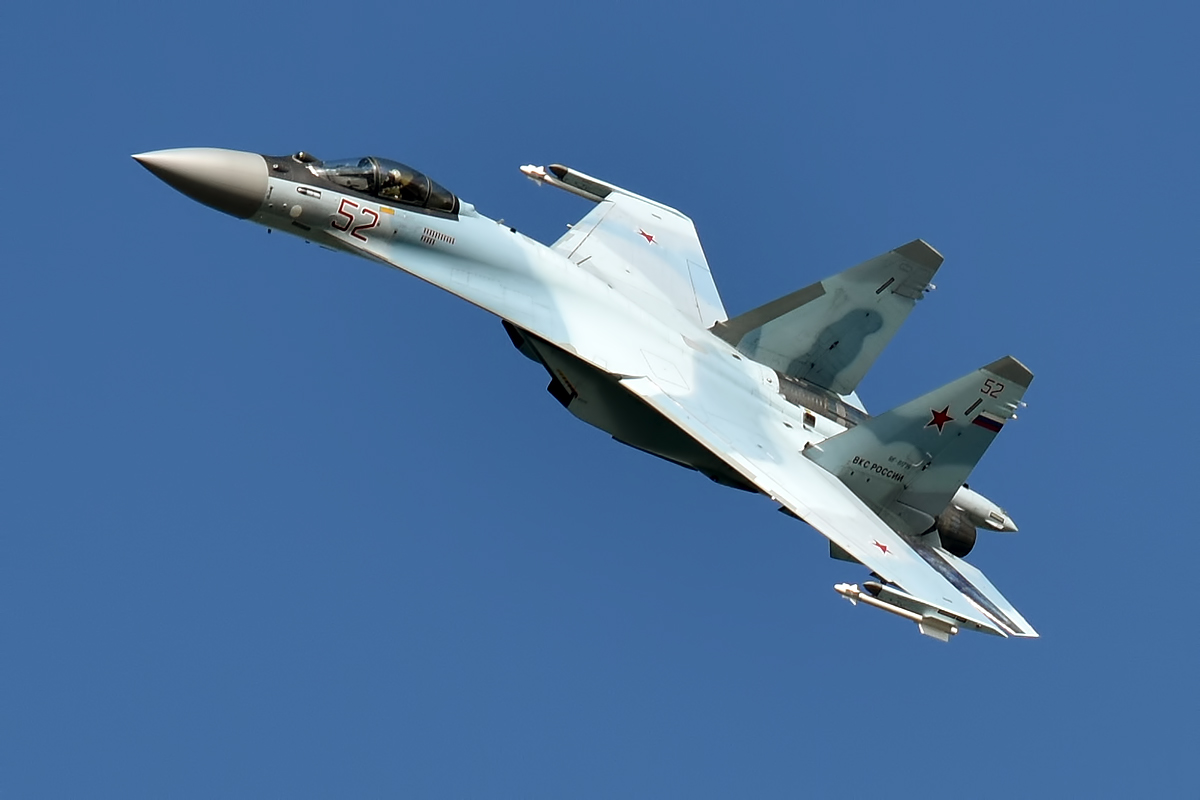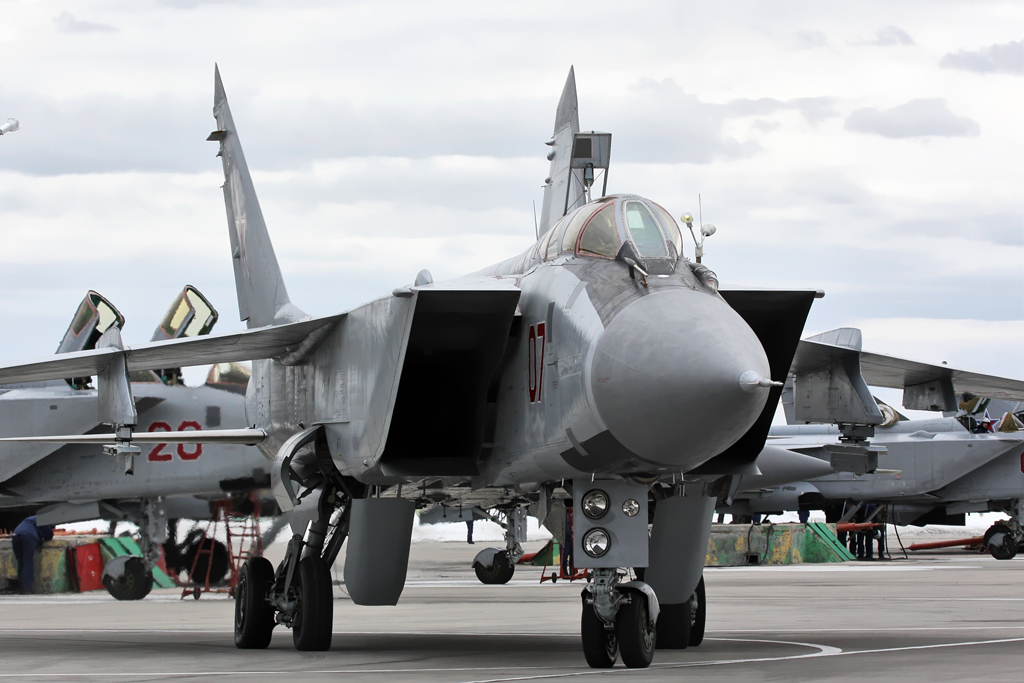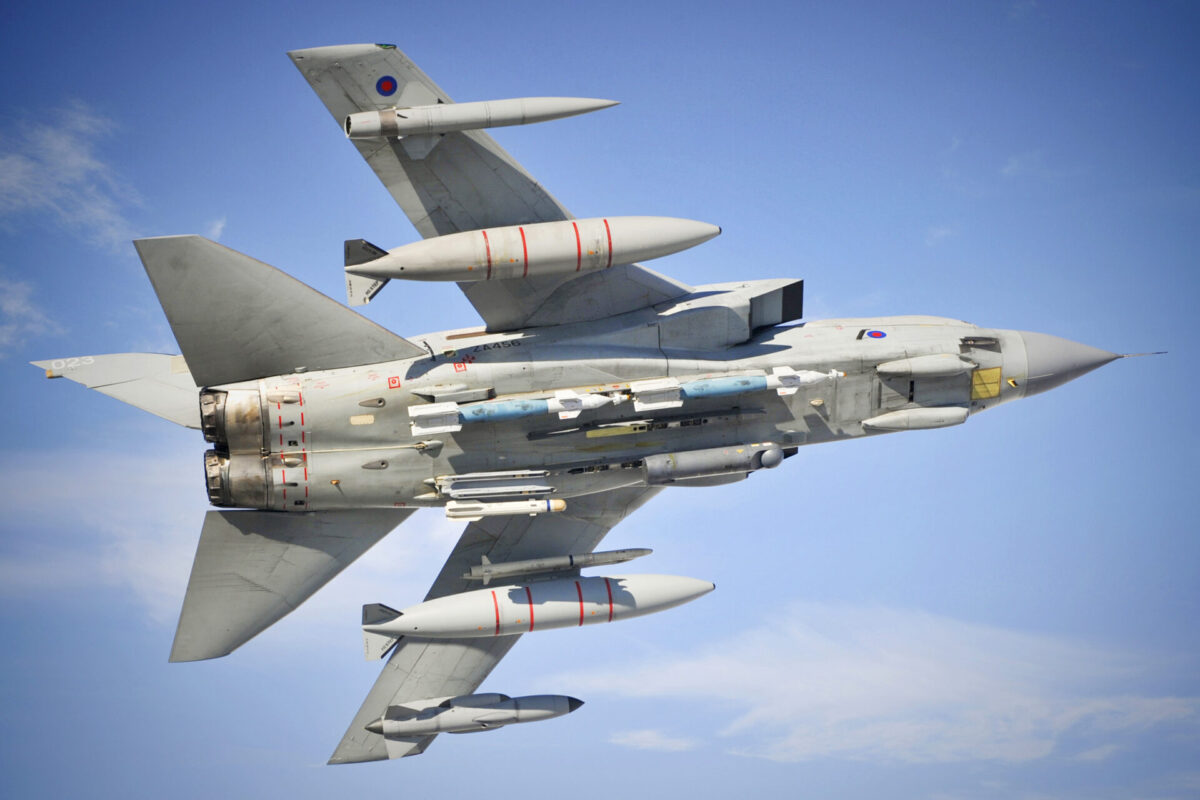Some fighter jets are made for speed, others for agility. Some of the most advanced fighter jets are made for stealth. But when it comes to weaponry, the most heavily armed fighter jets could literally be described as flying bomb trucks.
In terms of absolute weapons payload, the Boeing F-15EX Eagle II is the undisputed king of heavily armed fighter jets. According to Boeing, its payload capacity tops out at 29,500 lbs (13,300 kg) and can carry a combination of guns, missiles and bombs, depending on its mission.
Also packing plenty of heat is China’s Chengdu J-20 Mighty Dragon. Although specifications for the jet are less available, best estimates are that the J-20 has a weapons payload of around 27,000 lbs (12,250 kg). Recent social media posts suggest that China is attempting to increase this – more on that later.
Rounding out the top three is Russia’s bomb truck, the multirole Sukhoi Su-57 Felon. With internal weapons bays, side bays and six external hardpoints, it can carry up to 22,000 lbs (10,000 kg) of weaponry, ranging from air-to-air missiles to precision-guided bombs.
The 10 most heavily armed fighter jets in operation today
These are the top 10 most heavily armed fighter jets, based on available data from OEMs, air forces and open source intelligence. For the purposes of our list, we’ve excluded out-of-production and retired types, as well as fighter-bombers and aircraft not in operational service yet.
It’s important to note, not all fighter jets will carry their maximum payload on any given mission. In fact, fighter jets in ‘beast mode,’ carrying the maximum amount of weaponry, are rare to see outside of testing and demonstrations. However, the weapons payload does give us an indication of just what these fearsome fighters are capable of.
Stay with us as we take a deeper dive into each of these heavily armed fighter jets and the weapons they are capable of carrying.
1. Boeing F-15EX Eagle II
Payload: 29,500 lbs / 13,381 kg
The F-15EX isn’t just a revival of the classic fighter jet. It’s a frighteningly well-equipped jet with modern brains and a formidable contemporary fighter. It’s not built for stealth, and unapologetically leans into raw payload capacity and overwhelming missile saturation.
When used in tandem with stealthier counterparts like the F-22 or F-35, the F-15EX really comes into its own. Targets scoped out by its stealthy sisterships can have a barrage of munitions launched at them by the jet, without the F-15EX ever needing to enter close combat.
The F-15EX is the most heavily armed fighter jet in the US Air Force, and, for now, the world. Its open mission systems (OMS) architecture means next-generation weapons and electronic warfare pods can be seamlessly integrated into the platform, giving it relevance way beyond the 2020s.
2. Chengdu J-20 Mighty Dragon
Payload: 24,000 lbs / 10,886 kg
Unlike the F-15EX, the J-20 is designed for stealth, and is seen as China’s response to the F-22 and F-35. However, while its stealthy silhouette lends itself to invisibility, its operational philosophy is distinctly Chinese.
It doesn’t have the agility of Western fighters for close combat, but instead relies on long-range engagement, sensor reach and pure firepower. It reflects a strategic shift in China’s air combat strategy, intended to help control vast swathes of airspace over the Western Pacific Ocean.
It is believed to have a powerful AESA radar, which could lend itself to becoming a battle manager in connected airspace, controlling drones and supporting aircraft across a wide area. With both internal weapons bays and external hardpoints, it’s a 5th generation fighter that’s designed with the future in mind.
3. Sukhoi Su-57 Felon
Payload: 22,000 lbs / 9,979 kg
Combining stealth, agility and weaponry, the Su-57 is Russia’s flagship fighter jet, designed to get in under the radar and hit hard. While it’s not the stealthiest fighter jet in the world, its innovative design and array of weapons make for a formidable fighter.
The Su-57 features an internal weapons configuration, with two large tandem main weapon bays between the engines and two smaller side bays near the wing roots. This design allows the Su-57 to carry a variety of munitions internally, preserving its stealth profile.
For air-to-air combat, it can deploy up to four beyond-visual-range missiles in the main bays, and short-range missiles like the R-74M2 in the side bays. This internal carriage enables the Su-57 to engage multiple targets while maintaining a low radar cross-section.
4. Dassault Rafale
Payload: 20,900 / 9,500 kg
The French-built Rafale punches above its weight when it comes to weaponry. Designed as an ‘omnirole’ fighter jet, it can switch between air-to-air combat and deep strike on the same sortie.
What sets it apart isn’t just payload, but integration: the Rafale can deploy everything from nuclear cruise missiles to the Meteor beyond-visual-range air-to-air missile, and seamlessly coordinate them through one of the most advanced sensor fusion suites in any non-stealth fighter.
5. Eurofighter Typhoon
Payload: 20,000 lbs / 9,000 kg
As a high-performance multirole fighter jet, the Eurofighter Typhoon balances raw speed with a formidable weapons loadout of up to 20,000 lbs. While originally conceived as an air superiority platform, it has evolved into a capable strike fighter, integrating advanced air-to-ground munitions alongside air-to-air missiles, giving it deadly reach in both roles.
What makes the Typhoon particularly interesting is its sustained agility at high speeds – a trait it leverages to remain effective even in beyond-visual-range engagements. Unlike stealth aircraft, it relies on speed, altitude, and its powerful AESA radar to detect and strike first. In recent upgrades (Tranche 4 and 5), it’s also gaining new electronic warfare capabilities and a deep strike profile, giving it a stronger foothold in contested environments.
6. Lockheed Martin F-35 Lightning II
Payload: 18,000 lbs / 8,200 kg
The F-35 Lightning II is less about brute force and more about precision, survivability, and networked lethality. Because it is built for stealth, it can carry up to 5,700 lbs internally, giving it less chance of being spotted by radar or infrared. However, with its six external hardpoints, it can carry another 15,000 lbs of weaponry, giving it true multirole capabilities.
What makes the F-35 particularly exciting isn’t just its weapons, but how it uses them. Its advanced sensors and data linking capabilities allow it to act as a forward node in a connected battlespace, sharing data with other platforms like the heavily armed F-15EX or drones. It’s not only one of the most heavily armed fighter jets, but also one of the most future-proofed as well.
7. Mitsubishi F-2
Payload: 17,824 lbs / 8,085 kg
Often described as the ‘super F-16,’ the Mitsubishi F-2 is actually sold rather short by that. Its mix of air-to-ship strike power and multirole versatility is tailored to Japan’s maritime defense needs, and its capabilities are optimized for long-range engagements over the Pacific.
Beyond raw firepower, the F-2 was one of the world’s first fighters to adopt an AESA radar (J/APG-1) in operational service, giving it advanced tracking and targeting capabilities long before that became the norm. Its larger wing area, strengthened structure, and composite materials not only enhance payload capacity but also improve range and survivability.
Though it may lack the stealth of 5th generation, the F-2 is a precision strike workhorse designed to defend Japan’s extensive maritime domain with speed, reach, and hitting power.
8. Boeing F/A-18E/F Super Hornet
Payload: 17,750 lbs / 8,050 kg
The F/A-18E/F Super Hornet is a staple of naval aviation and a beast of an aircraft in its own right. While it doesn’t have the flashiness of stealth fighters or the sheer payload of an F-15EX, the Super Hornet’s real strength lies in its rugged versatility and reliability at sea.
Designed for carrier operations from the ground up, it can launch with heavy ordnance loads, land back on a moving deck with unspent weapons, and go again with minimal turnaround time. It can carry a broad range of munitions, including precision-guided bombs, anti-ship missiles, HARMs for SEAD missions, and air-to-air missiles — all in a single sortie if needed.
What really makes the Super Hornet enduring is its continuous evolution. The latest Block III upgrade gives it enhanced stealth shaping, a massive 10,000-hour airframe life, and a much-improved cockpit with a touchscreen display and open mission systems. It’s also playing a key role in the US Navy’s manned-unmanned teaming efforts, acting as the command platform for MQ-25 refueling drones and potentially future loyal wingmen.
9. Sukhoi Su-30
Payload: 17,673 lbs / 8,016 kg
The Sukhoi Su-30 is the Swiss Army knife of the Flanker family — a highly capable multirole fighter that’s been exported and adapted by multiple countries, including India, China, Malaysia, and Algeria. While it was originally derived from the Su-27 as a long-range interceptor, the Su-30 evolved into a true twin-seat, strike-capable, long-endurance fighter, able to carry a suite of weapons across 12 hardpoints.
What makes it special isn’t just the payload, but its ability to stay airborne for hours, deliver precision strikes, and conduct air-to-air missions with advanced radar-guided missiles — often all in the same flight. With in-flight refueling, a second crew member for workload sharing, and enormous range, it’s ideal for large countries with wide airspace and maritime zones to patrol.
10. Sukhoi Su-35S
Payload: 17,632 lbs / 8,000 kg
The Sukhoi Su-35S is Russia’s most advanced non-stealth fighter and arguably the ultimate evolution of the Flanker lineage. Externally, it resembles its Su-27 predecessor, but internally it’s a different beast entirely. It has powerful digital flight controls, a modern AESA-like radar, and thrust-vectoring nozzles that make it one of the most agile fighter jets in the world.
The Su-35S was also built with multirole versatility in mind, expanding on the air dominance role to include strike missions with weapons like the Kh-31 anti-radiation missile and Kh-59 standoff cruise missile. It’s been used extensively in Syria, both as an escort for Su-34 bombers and for precision strike missions. Though it lacks the stealth shaping of fifth-gen jets, its long-range sensors, electronic warfare suite, and sheer kinetic performance make it a serious threat in contested airspace.
Heavily armed fighter jets that didn’t make the list
While it’s practically obsolete today, the Mikoyan MiG-31 was a very heavily armed fighter jet with a payload of 20,000 lbs (9,000 kg). It was once the fastest fighter jet in the world, able to fly huge distances to hunt down and take out bombers, cruise missiles and reconnaissance aircraft at extreme range.
The Panavia Tornado IDS (Interdictor/Strike) is no longer in production but is still in service with Germany, Italy and Saudi Arabia. With a payload of 19,800 lbs (9,000 kg), it was one of the most formidable low-level strike aircraft of the Cold War and beyond, purpose-built to fly fast, fly low, and deliver heavy ordnance in contested environments.
Likewise, the McDonnell Douglas F-4 Phantom II, while phased out by the US several years ago, is still operational with Iran, Greece and Turkey. It has a weapons payload of 18,650 pounds (8,480 kg), and remains one of the most iconic and influential fighter jets ever built.


